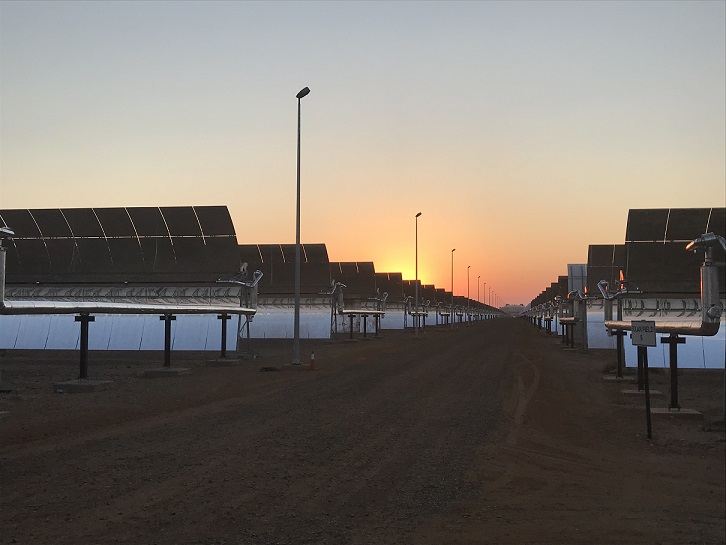
ENGIE is among the global companies that have been applying Concentrated Solar Power (CSP), a technique that uses mirrors to concentrate sunlight and convert it into heat, which is considered by some experts to be a potentially history-changing breakthrough in solar energy development.
HELIOGEN is a U.S.-based company touting what it says is just such a cutting-edge solar solution.
The startup recently came out of “stealth mode” — having actively avoided publicity during six years of development — to announce that they have invented a new technique to use CSP to produce cement. This is no small feat:
- Their 400 robotic heliotrope mirrors in the Mojave desert are able to generate heat above 1800°F, the range of difficult to generate temperatures needed to produce cement.
- With double the carbon footprint of the airline industry, the cement sector accounts for 8% of worldwide emissions and had been hard pressed to find clean energy solutions
- It’s a potential momentous technology that could revolutionize the construction industry, and has garnered widespread media attention and the financial backing of Bill Gates.
- Heliogen’s challenge now is to scale their products and prepare for commercialization.
SOLPART was the first company to demonstrate that CSP-generated heat could be used for industrial purposes, with another approach to try to maximize solar energy capture:
- Using the world’s largest solar furnace, they designed and tested two different cement reactors, both of which worked.
- While Heliogen uses AI to make sure its mirrors are always at the right angle, Solpart uses one enormous parabolic mirror that is 17 stories high.
- They plan to open a cement plant that’s partially solar powered in Spain by 2025.
- Solpart is currently working on finding a suitable way to store surplus solar energy so they can continue making cement even when the sun isn’t shining.
KATHU is a solar park in South Africa that has the potential to produce 700 cubic meters of concrete a day. It is ENGIE’s first foray into CSP:
- The park’s molten salt storage system can provide up to 4.5 hours of thermal energy when there isn’t enough sun.
- The 4.5 km² plant with 384,000 parabolic mirrors began commercial operations in early 2019, making it one of South Africa’s largest renewable energy projects.
- In addition to cement creation, the park will deliver energy to 179,000 homes in nearby municipalities.